Al Marsad: The Arab Center for Human Rights in the Golan Heights The Alternative Information Center
Declan Gannon
Table of Contents
Chapter 1: Overview
1.1 Background
1.2 The status of the Syrian Golan according to international law
1.3 Crimes committed by Israel in its 40 year occupation
1.3.1 The forcible transfer of civilians 1.3.2 Destroyed villages, towns and cities
1.3.3 Transfer of Israeli population into occupied territory
Chapter 2: Legal Analysis
2.1 War Crimes Committed in the Occupied Syrian Golan 2.1.1 Displacement and deportation of a population
2.1.2 Wanton destruction of property 2.1.3 Changing the ethnic demographic
2.2 Obligations of the High Contracting Parties 2.3 High Contracting Parties Obligations regarding Grave Breaches
Chapter 3: Ethnic Cleansing 3.1 What is ethnic cleansing?
3.2 Ethnic cleansing and the Occupied Syrian Golan Conclusion
Israel’s Violations of International Law in the Occupied Syrian Golan
Consecutive Israeli governments have taken numerous purposeful policies since Israel began its occupation of the Syrian Golan to eradicate or contain the Syrian population. They have destroyed hundreds of villages, driven thousands from their HOMEs, expropriated private and public property, constricted the expansion of the remaining villages and actively stopped the free movement of people.
Last summer marked the 40th anniversary of Israel’s occupation of the Syrian Golan. Israel began its occupation of the Syrian Golan following the 1967 Middle East War, and in 1981 enacted legislation that purported to annex the territory. This move was widely condemned by the international community and from the perspective of international law, the Syrian Golan remains an occupied territory to which the laws of occupation apply. The paper begins by examining the legal status of the Occupied Syrian Golan according to international law and determines the correct legal norms that apply. The paper then looks at various abuses committed by Israel during its 40 years of occupation that have led to war crimes amounting to grave breaches of the Geneva Conventions, and crimes against humanity. The report continues with a brief review of the concept of ‘ethnic cleansing’ as described by the United Nations Expert Commission which was set up by the Secretary-General of the United Nations on request of the Security Council to investigate grave breaches of the Geneva Conventions and other violations of international humanitarian law committed on the territory of the former Yugoslavia. The paper concludes by briefly examining whether the crimes committed in the Occupied Syria Golan fit the framework for ethnic cleansing as laid out by the United Nations Expert Commission.
The international community, which so far has done little to exert all possible pressure on Israel to end its occupation of the Syrian Golan, must become more pro-active in its quest for states to abide by the rules of international law. This report seeks to increase awareness amongst the international community regarding Israel’s illegal occupation and its violations of international law in the Occupied Syrian Golan.
Israel began its occupation of the Syrian Golan in 1967 following its aggressive victory in the 1967 Middle East War. Situated between Lebanon, Syria, and Israel, the Syrian Golan covers an area of approximately 700 square miles. Prior to its capture by Israel, the Syrian Golan had a population of approximately 139,000 people living in 312 residential areas. Today the population
of Syrian people in the territory numbers only around 18,000. The remaining demographic make-up of the Syrian Golan consists of Jewish settlers who have been actively encouraged to settle in the region by the state of Israel. It is estimated that the settler population also numbers around 18,000 people. Many of these settlements are on the southern approaches of the Golan, above the Sea of Galilee.
The Syrian Golan has significant importance for two main reasons. The first is from a military perspective. Mount Hermon, which is controlled by Israel’s military, reaches to 2,224 metres at its highest peak and has exceptional geostrategic value. It offers fantastic commanding positions that overlook southern Lebanon, much of southern Syria and to the west a number of Israeli metropolitan centres. The second major factor is water. The Syrian Golan is a massive source of water for the Middle East, located in the mountain ranges of the Golan in which the headwaters of the Jordan River lie, to the south lake Galilee and the Yarmuk River, all major water sources for the Middle East region. Following the capture of the Syrian Golan in 1967, the Israel government
handed all necessary power to its military commanders to administer the Occupied Syrian Golan. In 1981 Israel ended that military rule of the Syrian Golan with the legislative passage of the Golan Heights Law. This legislation annexed the territory to the state of Israel. During its 40 years of occupation of the Syrian Golan, Israeli has committed many blatant violations of international law. The illegal occupation and consequent violations of international law continue
today.
Chapter 1: Overview
1.1 Background
1. For information on the Occupied Syrian Golan and the 1967 Middle East war, see generally Randolph S Churchill, Winston S Churchill, The Six Day War, (Boston, Houghton Mif-flin,1967); See Jeremy Bowen, Six Days: How the Six Day War Shaped the Middle East, (New York Thomas Dunne Books, 2005); See Avigdor Kahalani, The Heights of Courage: A Tank Leaders War on the Golan, (Preager Paper Back, 1992); See Abraham Rabinovich, The Yom Kipper War: The Epic Encounter that transformed the Middle East, (Schocken, 2005).
Under the terms of international humanitarian law, the Syrian Golan is an occupied territory. Enshrined in Article 42 of the Hague regulations is an authoritative definition of occupation: a territory is considered “…occupied when it is actually placed under the authority of the hostile army. The occupation extends only to territory where such authority has been established and can be exercised.”
2- This definition or test is often referred to as “effective control”. It is obvious to anyone who has visited the Syrian Golan that the territory remains under the effective control, evidence of which can be seen by numerous Israeli military outposts and training installations, Israel’s tight control of the Golan’s boarders and also Israel’s general administration of the territory. Israel counter claims state that the territory of the Syrian Golan is not occupied; rather it is part of the Israeli state. These claims are based on a 1981 legislative act which annexed the territory of the Syrian Golan to the state of Israel. The legislative act became known as the Golan Heights Law. It declared that Jurisdiction and administration of the state shall apply to the Golan Heights…. This shall become valid on the day of its passage in Knesset.
3- The United Nations Security Council immediately condemned Israel’s actions, issuing Security Council Resolution 497 criticizing Israel’s actions as a violation of international law and urged member states to recognize the action as null and void.
4- Unfortunately, Resolution 497 was not adopted under Chapter VII
5- of the United Nations Charter. It may be argued that Resolution 497 had the intention of being binding on member states because of the wording of Article 25 of the Charter.
2 The status of the Syrian Golan according to international law
2. See Article 42 of the Fourth 1907 Hague Regulations, see regulations annexed to Convention
IV Respecting the Laws and Customs of War on Land, singed at the Hague, 18 October 1907
(hereinafter the 1907 Hague Regulations).
3. See Golan Heights Law, December 14, 1981, Israeli Ministry of Foreign Affairs.
4. See United Nations Security Council Resolution 497, adopted 17 December, 1981.
5. See Chapter vii of the United Nations Charter, entry into force, 24 October, 1945 describes the
Security Councils power to authorize economic, diplomatic and military sanctions, as well as the
use of military force, to resolve disputes.
And Resolution 497 uses the following language:
Decides that the Israeli decision to impose its laws, jurisdiction and administration in the Occupied Syrian Golan Heights is null and void and without international legal effect.
6-Hence, by using the wording ‘decides that’ it would suggest an intention on the part of the Security Council to bind member states – within the test expounded in the 1971 Namibia advisory opinion of the International Court of Justice.
7- The Commentary of the Fourth Geneva Convention offers the opinion that the occupation of territory during war time is no longer an acceptable practice and that territory captured during war is ‘essentially a temporary de facto situation, which deprives the occupied power of neither its statehood nor its sovereignty; it merely interferes with its powers to exercise its rights’
8- Foremost, Israel’s annexation of the Syrian Golan is illegal because it violates the principle of customary international law prohibiting the acquisition of territory by threat of force or use of force. The customary status of this principle of international law was confirmed by the International Court of Justice.
9- As a territory occupied, the Syrian Golan enjoys a specific legal status in international law, governed by the law of belligerent occupation. The provisions that make up the body of law of belligerent occupation are enshrined in Hague Regulations annexed to the Fourth Hague Convention Respecting the Laws and Customs of War on Land, the Fourth Geneva Convention Relative to the Protection of Civilian Persons in Time of War and certain provisions of the First
Protocol of 1977 Additional to the Geneva Conventions of 1949.
10- This legal standing provides that Israel has certain legal obligations as the occupying power that it must uphold and respect, while the peoples occupied (the indigenous Syrian population) become a protected people. Article 4(1) of the Fourth Geneva Convention states Persons protected by the Convention are those who, at a given moment and in any manner whatsoever, find themselves, in case of conflict or occupation, in the hands of a party to the conflict or Occupying power of which they are not nationals..
See Commentary to the Fourth Geneva Convention Relative to the Protection of Civilian Persons in Time of War, (International Committee of the Red Cross, ed Jean Pictet) p 275, hereinafter ICRC commentary to the Fourth Geneva Convention.
See International Court of Justice, Legal Consequences of the Construction of a Wall in the
Occupied Palestinian Territory, ICJ (2004), para. 87, hereinafter ICJ advisory opinion on the
construction of a wall in occupied territory.
See Regulations annexed to Convention IV Respecting the Laws and Customs of War on
Land, singed at the Hague, 18 October 1907 (hereinafter the 1907 Hague Regulations); Geneva
Convention IV Relative to the Protection of Civilian Persons in Time of War, adopted 12 August
1948, entered into force 21 October 1950, 75 U.N.T.S. 287 (hereinafter, the Fourth Geneva
Convention); Protocol 1 Additional to the Geneva Conventions of the 12 August 1949, and Relating to the Victims of International Armed Conflict, adopted 8 June 1977, entered into force 7 December 1978, 1125 U.N.T.S. 3-608 (hereinafter, Additional Protocol 1).
Article 27 of the Convention stipulates the protections afforded to the civilian population protected persons are entitled, in all circumstances, to the respect for their persons, their honor, their family rights, their religious convictions and practices and their manner and customs…..They shall at all times be humanely treated. Article 32 of the Convention goes on to elaborate the protections stipulated in Article 27; The high contracting parties specifically agree that each of them is prohibited from taking any measures of such a character as to cause the physical suffering or extermination of protected persons in their hands. This prohibition applies not only to murder, torture, corporal punishment, mutilation and medical or scientific experiments not necessitated by medical treatment of a protected person, but also to any other measures of brutality whether applied by civilian or military agents. An obligation to uphold the protections afforded to the protected persons is placed on the occupying power in Article 29, it states The party to the conflict in whose hands protected persons may be, is responsible for the treatment accorded to them by its agents, irrespective of any individual responsibility which may be incurred. However, while Israel is a state party to the Fourth Geneva Convention, it has consistently contested the applicability of the Convention to the territory Israel’s Violations of International Law in the Occupied Syrian Golan.
Even though Israel became party to the Geneva Convention in 1951, it has continuously failed to implement the provisions of the convention in the Occupied Syrian Golan as well as other occupied Arab territories. Former Israeli Attorney General Meir Shamgar did suggest that Israel would abide by the humanitarian provisions of the Convention. It must be noted here that generally all provisions of the Fourth Geneva Convention are humanitarian in character. Israel’s argument for non acceptance of the applicability of the Fourth Geneva Convention in the Occupied Syrian Golan is void of any sound legal basis. Israel bases its skepticism regarding the applicability of the Fourth Geneva Convention on the pre 1967 status of the West Bank and Gaza. Israel argues that neither the West Bank nor Gaza, pre 1967, were part of the territories of Jordan and Egypt and therefore the disputed territories could not be viewed as high contracting parties under the meaning of Common Article 2 of the Geneva Conventions. Paragraph 2 of Common Article 2 states The Convention shall also apply to all cases of partial or total occupation of the territory of a High Contracting party. Hence, Israel argues if the territories of Gaza and the West Bank are not part of the territory of High Contracting states, then the convention does not apply.
There are a number of fundamental flaws regarding Israel’s argument. With specific regards to the Occupied Syrian Golan, the interpretation is flawed because the pre-1967 status of the Syrian Golan as territory of Syria was not disputed by Israel and hence was the territory of a High Contracting Party; Syria became party to the Convention in 1953.
As aforementioned Israel became party to the Convention in 1951, thus, both Israel and Syria are High Contracting Parties and obligated to apply the provisions of the Convention.
See judgment of Hilu v. Government of Israel, et al, HCJ 302/72 and 306/72, where the Israeli High Court of Justice maintained that customary international law is considered to be part of Israeli internal law without the need for any special legislation, unless contradictory to another provision in internal law.
Information about states parties to the four 1949 Geneva Conventions supplied by the depository
(the Swiss Federal Department for Foreign Affairs) and valid as of 1 July 1998.
See Common Article 2, Fourth Geneva Convention.
Since Israel began its occupation of the Syrian Golan in 1967, it has committed a number of violations of international human rights and humanitarian law that have deliberately and negatively impacted the civilian ethnic group of the Syrian Golan. These abuses taken together have led to the widespread depopulation of the Syrian Golan of its indigenous ethnic group. The Syrian Golan has further seen the widespread increase in population of a foreign ethnic group (Israeli settlers).
1.3 Crimes committed by Israel in its 40 year occupation
The depopulation of the Syrian Golan of its native inhabitants was the first major abuse conducted in the Golan during and following the end of the 1967 war between Israel and its Arab neighbours. Prior to the occupation, the Syrian Golan contained approximately 138,000 Syrian inhabitants in 312 separate residential areas, including two cities, Al Qunaitera and Fayq. Following the initial occupation, around 131,000 people were expelled to Syria and forbidden to return. The remaining population of around 7,000 Syrian inhabitants remained in six villages located at the extreme north of the Golan. These villages were Majdal Shams, Masa’da, Bqa’atha, ‘Ein Qinyeh, Al Ghajar, and Su’heita (Su’heita was subsequently transformed into an Israeli military post after the transfer of its population to Masa’da; it was completely destroyed in 1971-2.).
Israel succeeded in depopulating the Golan through a number of means, no more so than its regime of military orders that were introduced by the military to administer the newly occupied territory. For example, Military Order No.1 declared that the whole of the Syrian Golan was a closed military zone, and that no one was permitted to enter or leave it, regardless of their identity. Through this order, Israeli officials sought to enforce the depopulation of the area from
its native Syrian inhabitants by prohibiting Syrian citizens, who had fled the conflict or were forcibly transferred, from returning to the area. The forcible transfer and deportation of the majority of the native Syrian inhabitants from their HOMEs and the Syrian Golan was the most serious and controversial action carried out by the Israeli authorities. While the legal analysis will be discussed below, it is noted here that Israel’s actions in forcefully transferring the population of the Syrian Golan amount to a crime against humanity within the term of the Rome Statute of the International Criminal Court20 and also a grave breach of the Fourth Geneva Convention.
1.3.1 The forcible transfer of civilians
Grave breaches are the most severe types of war crimes. These actions by Israel also seriously violated the fundamental human rights of the people of the Syrian Golan, most notably, the right to own property which is up held in Article 17 of the Universal Declaration of Human Rights which
states that ‘No one shall be arbitrarily deprived of his property’21 Following the beginning of Israel’s occupation, hundreds of villages, towns and cities were destroyed in the Syrian Golan. With thousands of people forced to leave the territory unable to return, an estimated 131,000 people, the Israeli military were, for the most part, unopposed in their administration of the newly
occupied territory. Israeli set about destroying all the villages, towns and cities that were now empty. Many people had fled the conflict zone during the days of fighting with the notion of returning once the war was over. However, once the hostilities had ceased the people tried to return to their HOMEs but were physical stop by the Israeli military. The only villages to escape the destructive wrath of the Israeli military were Majdal Shams, Masa’da, Bqa’atha, ‘Ein Qinyeh, Al-Ghajar and Su’heita, six small villages in valley of Mount Hermon. The population of these villages numbered around 7’000 people, and today reaches 18’000. Jewish settlements were than built in place of the destroyed Arab villages and farms, taking control over land and resources and resulting in a huge benefit to the Israeli economy.
As mentioned above, these actions were achieved through the use of Israeli military orders. Again it must be emphasised here that Israel’s destruction of property in the Occupied Syrian Golan amounts to a grave breach of the Fourth Geneva Convention22 and is regarded as a war crime by both the International Criminal Tribunal for the Former Yugoslavia23 and the International Criminal Court.
Israel’s actions also violated the basic human right to an adequate standard of living which is outlined in Article 11(1) of the International Covenant on Economic Rights and Cultural Rights: The States Parties to the present Covenant recognize the right of everyone to an adequate standard of living for himself and his family, including adequate food, clothing and housing, and to the continuous improvement of living conditions. The States Parties will take appropriate steps to ensure the realization of this right, recognizing to this effect the essential importance of international co-operation based on free consent.
Furthermore, a number of provisions outlined in the International Convention on Civil and Political Rights highlight that a person has the right not to be ‘arbitrarily deprived of ones property’ nor to be ‘subjected to arbitrary interference with one’s privacy, family, HOME or correspondence.’26 Israel’s actions have clearly breached these principles of international human rights law. There is also an argument that such unnecessary destruction of civilian property could
amount to torture or cruel and inhumane treatment. The prohibition of such treatment is of course a fundamental norm of international law from which no derogation is permitted.
The presence of Israeli settlements and their continued expansion inside occupied territory, including that of the Syrian Golan, represents one of the biggest obstacles to lasting peace in the Middle East. Israeli settlements further represent a clear violation of international humanitarian law and human rights law. There are presently a vast number of settlements spread across the Occupied Syrian Golan with their population reaching approximately 18,000 people. One of the largest settlements is Katsrin, which alone holds up to 5,000 people. Israel’s settlement policy in the Occupied Syrian Golan is a major problem for several reasons. Firstly, settlers have expropriated the vast majority of land and resources, such as water, economically strangling the Arab population isolated in the north of the region. Secondly, the settlements and the settlers they house are by now well established and consolidated, making it all but impossible for Internaly Displaced Persons to return and set up once again on their land. Thirdly, the presence of around 18,000 settlers in the Occupied Syrian Golan has a devastating effect on the ethnic make-up of the region. The presence of Israeli settlements in occupied Arab territory has not eluded the attention of the international community. In 1979 the United Nations Security Council made the following statement regarding Israeli settlements Determines that the policy and practices of Israel in establishing settlements in Palestine and other Arab territories occupied since 1967 have no legal validity and constitute a compromise to just and lasting peace in the Middle East.
This sentiment was later shared by the International Court of Justice when, in its advisory opinion on the legal consequences of the construction of a wall in Occupied Palestinian Territory, it discussed Israeli settlements in relation to Article 49(6) of the Fourth Geneva Convention. The court held that That provision prohibits not only deportations or forced transfers of population such as those carried out during the Second World War, but also any measures taken by an occupying power in order to organize or encourage transfers of parts of its own population into the occupied territory…In this respect, the information provided to the Court shows that, since 1977, Israel has conducted a policy and developed practices involving the establishment of Settlements in the Occupied Palestinian Territory, contrary to the terms of Article 49, paragraph 629 It is quite clear from the above that the international community views Israel’s policy of settlement expansion as illegal under international law, despite Israel’s best efforts to mislead the international community by inventing new terminology to justify the settlement program.
In what seems to be a clear reference to Israeli settlements in occupied territory, the International Criminal Court declared that a state transferring its population from its territory into that it occupies can be prosecuted by the Court. This action is codified as a war crime under the Rome Statute.31
The settlements’ expansion policy has also violated some of the most basic of human rights. These include, inter alia, the rights of individuals to own property and to protect this property against unjust seizure; the economic rights of people and their rights to utilise and benefit from wealth and resources of their territory; and the right to freedom of movement for the indigenous people of the
Occupied Syrian Golan.
During its 40 year occupation of the Syrian Golan, Israel has committed numerous international crimes including war crimes, amounting to grave breaches of the Geneva Convention, and crimes against humanity.
Chapter 2: Legal Analysis
2.1 War Crimes Committed in the Occupied Syrian Golan
As mentioned above, the Israeli government and military facilitated the mass depopulation of the Syrian Golan. This action is a direct violation of Article 49 of the Fourth Geneva Convention which states, “individual or mass forcible transfers, as well as deportation, of protected persons
from occupied territory to the territory of the Occupying Power or to that of any other country, occupied or not, are prohibited regardless of their motive”. Article 49 goes on to declare that, “The Occupying Power may undertake total or partial evacuation of a given area if the security of the population or imperative military reasons so demand. Such evacuations may not involve the displacement of protected persons outside the bounds of the occupied territory except when for material reasons it is impossible to avoid such displacement. Persons thus evacuated shall be transferred back to their HOMEs as soon as hostilities in the area in question have ceased”. The International Criminal Court has also classified such unlawful transfer or deportation as a ‘Crime against Humanity’ codified in Article 7(1) (d) of the Rome Statute “Crimes against humanity means any of the following acts when committed as part of a widespread or systematic attack directed against any civilian population, with knowledge of the attack…Deportation or forcible
transfer of population’. Such transfers of protected persons are also regarded as a grave breach of the Fourth Geneva Convention under Article147.
2.1.1 Displacement and deportation of a population
Grave breaches to which the preceding Article relates shall be those involving any of the following acts, if committed against persons or property by the present Convention: wilful killing, torture or inhuman treatment, including biological experiments, wilfully causing great suffering or serious injury to body or health, unlawful deportation or transfer or unlawful confinement of a protected person, compelling a protected person to serve in the forces of a hostile Power, or wilfully depriving a protected person of the rights of fair and regular trial prescribed in the present Convention, taking of hostages and extensive destruction and appropriation of property, not justified by military necessity and carried out unlawfully and wantonly.
See Agreement for the Prosecution and Punishment of Major War Criminal of the European
Axis and Establishing the Charter of the International Military Tribunal, entered into force 1945.
See Article 8, Rome Statute of the International Criminal Court. Israel’s widespread, indiscriminate destruction of the protected civilian property in the Syrian Golan, not justified by an absolute military necessity, is strictly prohibited by Article 53 of the Fourth Geneva Convention and can be classified a war crime under international law.
This is highlighted in a number of provisions of international legal instruments. The International Military Tribunal of Nuremberg stated that war crimes may include, but would not be limited too
‘murder, ill-treatment or deportation to slave labour or for any other purpose of civilian population of or in occupied territory, murder or ill treatment of prisoners of war or persons on the sea’s, killing hostages, plunder or public or private property, wanton destruction of cities, towns or villages, or devastation not justified by military needs’.
More recently, the Rome Statute of the International Criminal Court has indicated that ‘extensive destruction and appropriation of property not justified by military needs and carried out unlawfully and wantonly’ is a war crime under Article 8 as relating to war crimes.
2.1.2 Wanton destruction of property
Israel claims that the destruction of property was conducted under the pretext of security, in other words it was a military necessity to act in this manner. However, this exception to the rule is extremely narrow in order to prevent it being abused. Article 53 of the Fourth Geneva Convention stresses this point: Any destruction by the Occupying Power of real or personnel property belonging individually or collectively to private persons, or to the state, or to other public authorities, or to social or cooperative organizations, is prohibited, except where such destruction is rendered absolutely necessary by military operations. Israel’s extensive destruction of entire towns and cities can not be deemed an absolute military necessity. The destruction of property in the Occupied Syrian Golan by the Israeli armed forces following the end of hostilities in 1967 was
undoubtedly extensive. The very fact that hundreds of villages, towns and even cities were destroyed is evidence enough to show the extensive nature of Israel’s actions. In regards to destruction of property that is carried out wantonly, this means destruction that is “extensive, unnecessary and wilful”. Clearly these conditions were met. It is indisputable that Israel’s actions in the Occupied Syrian Golan following the end of the 1967 war regarding the widespread, indiscriminate destruction of civilian property, not justified by absolute military necessity, clearly amount to a war crime and a grave breach of the Fourth Geneva Convention.
Israeli settlements in occupied territories are a clear and blatant violation of international humanitarian law. Article 49(6) of the Fourth Geneva Convention states the following The occupying power shall not depart or transfer parts of its own civilian population into the territory it occupies. Clearly this provision of the Fourth Geneva Convention applies to Israeli settlement activity. Consecutive Israeli governments since 1967 have pursued a policy of settlement expansion into occupied territory. Settlers have been actively encouraged and helped to begin their settlements in occupied territories by the Israeli government of the day.42 Of course Israel has tried to argue the legality of settlements; their foremost argument resides around the terminology of Article 49(6) of the Fourth Geneva Convention. They claim that Article 49(6) only prohibits the forcible transfer of the population of the occupying power into the occupied territory and hence is not concern with the voluntary movement of people into occupied territory. This argument is utterly flawed in that the provision simply doesn’t restrict itself to forced population movement. The provision specifically uses the term ‘transfer’ and hence the transfer of population can thus be carried out forcibly or voluntarily.
Article 55 of the Hague Regulations points out that Israel has an obligation not to make permanent changes in occupied territory The occupying state shall be regarded only as administer and usufruct of public buildings, real estate, forest and agriculture estates belonging to the hostile state and situated in the occupied country. It must safe guard the capital of these properties and administer them in accordance with the rules of usufruct When a government expropriates vast quantities of land and transfers its population into that territory, it is hard not to conclude that Israeli settlements are intended as permanent changes. This of course goes against the temporary nature of occupation and clearly violates Article 55 of the 1907 Hague Regulations. Israel is obliged to abide by the 1907 Hague Regulations because of their customary nature. Article 8(2)(b)(VIII) of the Rome Statute of the International Criminal Court prohibits The transfer, directly or indirectly, by the Occupying Power of parts of its own civilian population into the territory it occupies, or the deportation or transfer of all or parts of the population of the occupied territory within or outside this territory.
The authoritative ICRC commentary on the Fourth Geneva Convention declares that a state must not only be concerned about its own performance regarding the application of the provisions of the Convention, but also urges the High Contracting Parties to ensure compliance by other states in their application of the Convention. Because Israel fails to recognize the applicability of the Convention in the Occupied Syrian Golan, it is up to the other High Contracting Parties, who are
obliged to act, in accordance with the United Nations Charter and international law, to ensure Israel complies with its obligations as a High Contracting party and that the protected persons under Israel’s occupation receive the rights afforded to them by the Convention. This sentiment was highlighted by the International Court of Justice in its advisory opinion on the construction of a wall in occupied territory ‘Every state party to the Convention, whether or not it is a specific conflict, is under the obligation to ensure that the requirements of the instruments in question
are complied with.’
Each High Contracting Party shall be under the obligation to search for persons alleged to have committed, or to have ordered to be committed, such grave breaches, and shall bring such persons, regardless of their nationality, before its own courts. It may also, if it prefers, and in accordance with the provisions of its own legislation, hand such persons over for trail to another
High Contacting Party concerned, providing such High Contracting Party has made out a prima facie case. In all circumstances, the accused persons shall benefit by safeguards of proper trail and defence, which shall not be less favourable than those provided by Article 105 and those following of the Geneva Convention relative to the Treatment of Prisoners of War of August 12, 1949.
Article 146 places on High Contracting Parties an obligation to provide adequate penal sanctions in their judicial system for perpetrators liable of grave breaches, outlined in Article 147. Article 146 also places an obligation on High Contracting Parties to seek out those responsible for grave breaches, in accordance with the general principles of international law, wherever the perpetrators may be. In other words, a High Contracting Party is obliged to seek out the suspect on its own territory and the territory of other High Contracting Parties. If the suspect is at large on the territory of another High Contracting Party, the seeking state may exercise extradition proceedings by regular procedure. In other words, grave breaches can be considered as war crimes entailing mandatory universal jurisdiction. Under the universal jurisdiction law system, a given state’s courts may act with jurisdiction over persons who have committed serious crimes under international law such as war crimes, crimes against humanity and genocide, regardless of whether that state had a link to the crime or not. According to a 2006 Human Rights Watch, report the principle of universal jurisdiction is alive and well in Europe. War crimes committed in the Occupied Syrian Golan can potentially be prosecuted in jurisdictions such as Norway, the United Kingdom and foremost Spain, where a law passed in 1985 confers broad universal jurisdiction upon Spanish courts.
Ethnic cleansing in the wide sense of the term can be characterized as the forcible depopulation of a particular ethnic group from a territory and falls within the scope of crime against humanity. The individual gross violations of human rights involved in ethnic cleansing can be classified as crimes against humanity and war crimes. The term ethnic cleansing is not actually formally defined under international law. However, a UN commission of experts, set up by the Secretary-General of the United Nations on request of the Security Council to investigate grave breaches of the Geneva Convention and other violations of international humanitarian law committed on the territory of the former Yugoslavia, has broadly defined the term as a: ‘purposeful policy designed by one ethnic or religious group to remove by violent and terror–inspiring means the civilian population of another ethnic or religious group from geographic areas … This purpose appears to be the occupation of territory to the exclusion of the purged groups or groups’.
‘Mass murder, torture, rape and other forms of sexual assault; severe physical injury to civilians; mistreatment of civilian prisoners and prisoners of war; use of civilians as human shields; destruction of personal, public and cultural property; looting; theft and robbery and personal property; forced expropriation of property; forceful displacement of civilian population’. The United Nations Security Council has classified ethnic cleansing as a violation of international humanitarian law and declared that perpetrators must be brought to justice.
Chapter 3: Ethnic Cleansing
3.1 What is ethnic cleansing?
As discussed previously, a number of war crimes and crimes against humanity have been committed in the Occupied Syrian Golan. Put together, these crimes 3.2 Ethnic cleansing and the Occupied Syrian Golan.
See United Nations Security Council Resolution 771, Adopted 13 August, 1992; See United
Nations Security Council Resolution 780, Adopted 06 October, 1992; See United Nations Security
Council Resolution 497, Adopted 22 February, 1993 (listed above) have had the disastrous effect of almost entirely eradicating one ethnic group from the Golan and replacing it with another. The forced displacement of the population, the widespread destruction of villages, towns and cities, the transfer of parts of another population into the occupied territory, the constriction of the remaining villages and the restriction on peoples’ right to free movement are but a few of the means employed by the Israeli government to remove almost an entire ethnic group from the majority of the Occupied Syrian Golan and redistribute the population into neighboring countries or controlled towns in which they can be concentrated, confined and controlled.
The situation in the Occupied Syrian Golan is all the more alarming considering the fact that large areas of the region have been resettled by Jewish communities. This of course has the dramatic knock-on effect of changing the ethnic makeup of the region. This could result in a permanent feature if the large-scale displacement that occurred is not urgently addressed and reversed. Below, the report details its finding on ethnic cleansing in the Occupied Syrian Golan. However, a more in-depth impartial investigation such as the United Nations Experts Commission on crimes committed in the former Yugoslavia is necessary to identify individual criminal responsibility for ethnic cleansing, including related crimes against humanity and war crimes:
1) Firstly, the Israeli government is responsible for the human rights violations against the people of the Occupied Syrian Golan that resulted in the large scale population of the area of its indigenous people.
2) Secondly, the Israeli government followed clear patterns that were systematic and planned. Villages, towns and cities were first emptied, and then became closed military zones, before being destroyed.
3) Thirdly, many of the operations were carried out in a similar manner: military orders were issued; villages, towns, cities became closed military zones; the majority of people who had left became unable to return to their HOMEs. The Israeli military was now unopposed in its campaign of destruction of property. Once the land became cleansed of the indigenous ethnic group, Israel settlers were free to take up residence in the occupied territory.
4) Fourthly, the widespread destruction and expropriation of property, Israel’s Violations of International Law in the Occupied Syrian Golan.
5) Fifth, the remaining Arab people in the small number of villages to the north have severe movement restrictions placed on them. On top of that, their communities are unable to grow or expand by any great means because of biased racial planning restrictions imposed on them by the Israeli government.
This report has investigated a number of Israeli practices carried out during the occupation of the Syrian Golan. I have come to the conclusion that not only has Israel committed violations of international humanitarian law and international human rights law, but is further responsible for committing a number of grave breaches included in Article 147 of the Geneva Convention. This report has also come to the conclusion that these crimes committed by Israel in the Occupied Syrian Golan may well be classified as ethnic cleansing under the definition of the term outlined by the United Nation Commission of Experts. However, it is recommended that a more detailed investigation be carried out such as the United Nations Expert Commission on crimes committed in the former Yugoslavia in order to identify individual criminal responsibility for ethnic cleansing, including related crimes against humanity and war crimes What is abundantly clear is that the Syrian Golan remains an occupied territory and the laws of belligerent occupation apply to the region. Israel has carried out a number of war crimes during its 40 year long occupation of the Syrian Golan and must be held responsible for its actions. Liability for such crimes possibly
rests at both the political and military level of the state of Israel. The report has highlighted that the system of universal jurisdictiction is a viable option in bringing Israeli war criminals to justice, a system encouraged by the Geneva Conventions. It is time other High Contracting Parties to the Geneva Conventions fulfilled their obligations under Article 146 of the Fourth Geneva Convention by seeking out and prosecuting Israeli war criminals accused of committing or ordering to commit grave breaches of the Fourth Geneva Conventions.
I conclude finally by suggesting that the international community most take more pro-active action in an effort to stem Israel’s continued disregard for international law. Such disregard only weakens the system for everyone and is an obstacle to peace and stability in the Middle-East. This report was prepared by Al Marsad, and investigates Israeli practices carried out during the occupation of the Syrian Golan. During 40 years of occupation not only has Israel committed violations of international humanitarian law and international human rights law, but is further responsible for committing a number of grave breaches included in Article 147 of the Geneva
Convention. This report has also come to the conclusion that these crimes committed by Israel in the Occupied Syrian Golan may well be classified as ethnic cleansing under the definition of the term outlined by the United Nation Commission of Experts.
The Alternative Information Center (AIC) is an internationally oriented, progressive, joint Palestinian-Israeli activist organization. It is engaged in dissemination of information, political advocacy, grassroots activism and critical analysis of the Palestinian and Israeli societies as Al Marsad is a non-profit legal human rights organization. established in October 2003 by a group of professionals from Majdal Shams, a village in the northern Occupied Syrian Golan. It is the first organisation in the Golan to address the long neglected human rights situation in the region.
well as the Palestinian-Israeli conflict.
Declan Gannon
2008

 May 29, 2011
May 29, 2011 





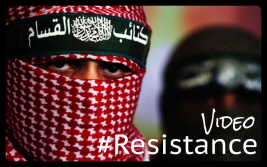

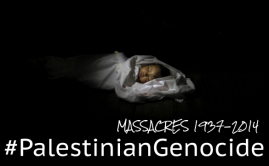





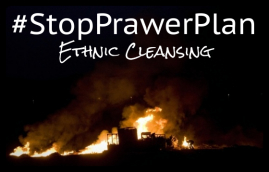










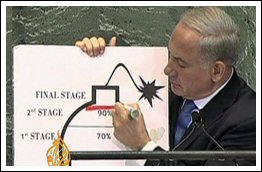
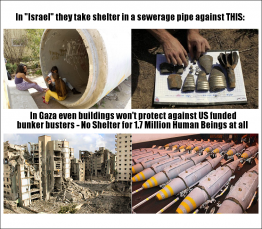





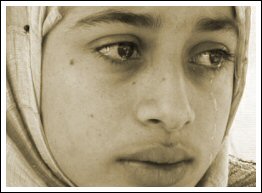
Comments are closed.